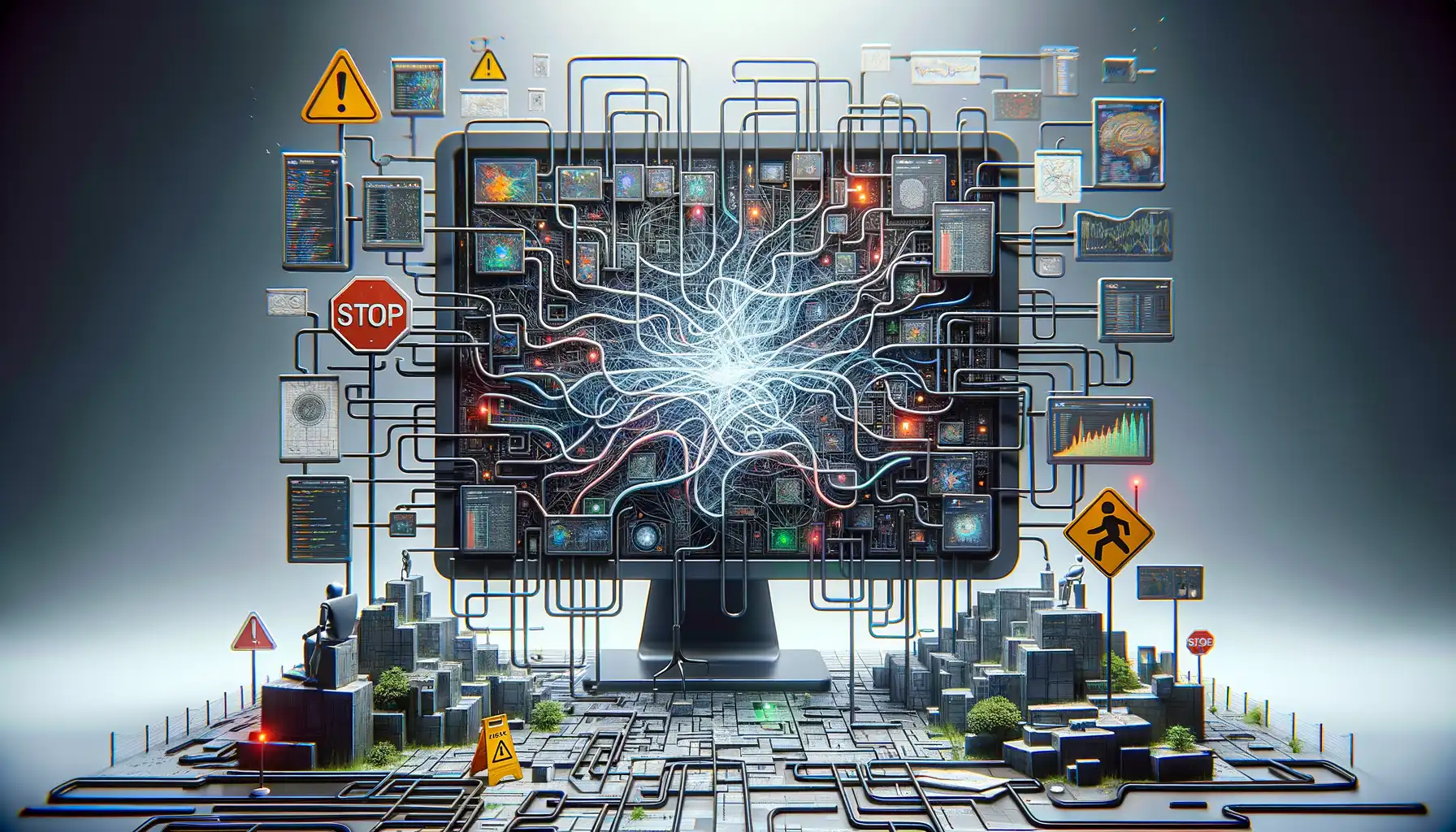Introduction to Machine Learning in Content Moderation
Picture this: you’re scrolling through your favorite social platform, enjoying cat videos and heartfelt stories, when suddenly—bam!—an inappropriate post interrupts your blissful doomscrolling. Annoying, right? That’s where machine learning steps in as the unsung hero of content moderation, working tirelessly behind the scenes to ensure a safe and enjoyable digital experience for everyone.
The Magic Under the Hood
At its core, machine learning in content moderation isn’t just about algorithms doing math—it’s a blend of intuition-enhanced tech. These systems “learn” by analyzing colossal datasets of text, images, and videos to understand what flies and what flops online.
- A spammy comment popping up? A trained Natural Language Processing (NLP) model can sniff out offensive language faster than you can say “troll alert.”
- An image that violates community standards? Computer vision models can identify inappropriate visuals with pixel-perfect precision.
Why It Feels Personal
Here’s the kicker: these models don’t just rely on hard rules—they adapt. They consider cultural context, slang evolution, and regional nuances. For instance, what’s fine in one culture might be eyebrow-raising elsewhere, and modern ML systems are sophisticated enough to get that nuance. It’s almost like they’ve been reading your mind… or maybe just your memes!
Key Machine Learning Techniques for Content Moderation

Understanding Supervised Learning in Moderation
Picture this: supervised learning is like teaching a toddler right from wrong using flashcards. You show the algorithm examples of what’s acceptable (a friendly post) and what isn’t (harassment, hate speech), giving it clear labels. Over time, with enough “training,” our digital student becomes really good at spotting toxic content. For example, platforms like Facebook lean heavily on this technique to identify profanity or graphic content.
But let’s not mistake supervised learning for magic—it relies on large, diverse datasets. Imagine feeding it biased or incomplete examples. The result? A machine that can’t tell the difference between sarcasm and genuine negativity. It’s like teaching someone sarcasm but forgetting to tell them to laugh when it’s funny!
Natural Language Processing: The Secret Weapon
How does a machine “understand” the chaotic world of human language? Enter Natural Language Processing (NLP), your platform’s silent hero. Using NLP, algorithms detect slurs, threats, or even veiled hate speech hiding behind polished grammar or euphemisms. Technologies like sentiment analysis or entity recognition make this possible—but it’s more art than science.
For example, in a game forum, the phrase “nice aim” could be praise—or an insult if dripping with sarcasm. This is why integrating contextual analysis, tone recognition, and cultural nuances into NLP models is so critical.
- Sentiment Analysis: Gauging emotional undertones in texts.
- Keyword Matching: Spotting risky patterns, but with nuance.
Machine learning might not read minds—but linguistic tech sure gets close.
Challenges and Limitations of Machine Learning in Moderation

When Machines Hit Their Limits: The Human Element
Picture this: you’re at a party, and someone cracks a joke so nuanced, it takes you a moment to get it. Now imagine explaining that joke to a computer—sounds impossible, right? That’s precisely one of the key struggles with machine learning in moderation. While these algorithms excel at data crunching and pattern recognition, they often lack the ability to discern context or subtlety, leading to missteps.
For instance, sarcasm—a beloved internet pastime—confounds machines. A user can call someone “a genius” in response to a terrible idea, but an algorithm might simply take those words at face value. Suddenly, you have unintended censorship or worse, harmful content slipping through the cracks. It’s like trying to teach a robot how to “read between the lines”—easier said than done.
The Unavoidable Bias Problem
Then there’s bias, the stubborn thorn in the system’s side. Whether we like it or not, algorithms are shaped by the data they’re fed—and let’s be real, human history isn’t exactly spotless. If an AI-trained model ingests biased data, it risks perpetuating stereotypes or targeting marginalized groups. Some examples of these limitations include:
- Flagging harmless cultural terms as inappropriate.
- Failing to detect hate speech hidden behind coded language.
- Inconsistent moderation between languages or dialects.
So while machine learning is a powerful ally, it’s no superhero. Sometimes, it’s the human touch that makes all the difference. After all, some things just need a pulse to fully understand.
Case Studies and Real-World Applications

How Machine Learning Tackles Real-World Chaos
Picture this: millions of users uploading content every second. Posts, comments, videos, memes—it’s a digital avalanche. Without machine learning, keeping these platforms safe would feel like bailing out a sinking ship with a teacup. Enter real-world applications where AI models shine their brightest.
Take Facebook, for instance. Their machine learning algorithms scan text, images, and even live streams. When someone uploads harmful or violent content, the AI steps in—almost instantly. It can blur or remove content faster than any human ever could. But here’s the twist: it learns with experience. Algorithms get smarter as they analyze more nuanced cases over time.
Or think about Reddit. Their community guidelines are upheld by AI armed with natural language processing. Hate speech or spam? The AI flags it immediately, saving moderators endless hours of tedium.
The beauty of these systems isn’t perfection (they’re far from it!). It’s efficiency. They enable a level of monitoring possible only because AI thrives in messy, complex environments. And let’s face it—social media is nothing if not chaotic.
Unexpected Uses of AI Beyond Social Media
But here’s where things get even more exciting. Machine learning isn’t just the hero of social media platforms. It’s making waves in surprising industries:
One of my personal favorites? Educational forums. Platforms like Stack Overflow use moderation algorithms to weed out low-quality posts, keeping discussions focused and helpful.
When you stop to think about it, ML isn’t just about blanket solutions. It’s about meeting people where they are, bringing order to the chaos, and making digital interactions better for everyone involved.
Future Prospects and Innovations in Machine Learning for Content Moderation

Unlocking Tomorrow’s Possibilities in Content Moderation
Picture this: a digital world where offensive content is flagged with near-human precision, and creativity flourishes without the fear of harmful disruptions. That’s the promise of emerging innovations in machine learning for content moderation. The future is all about making these systems more intuitive, intelligent, and deeply aligned with human values.
Technologies like context-aware AI are on the rise. Unlike traditional rule-based models, these systems understand the subtle nuances of language—sarcasm, cultural idioms, even evolving slang—without raising unnecessary red flags. And it doesn’t stop at text! Advanced image and video recognition tools are learning to decipher everything from hate symbols hidden in memes to inappropriate gestures buried in livestreams.
- Explainable AI (XAI): Transparency is king! New models aim to show moderators why decisions were made. Imagine peeling back the layers of a neural network like an onion, but without the tears.
- Real-time data adaptation: Think algorithms that adjust to breaking news or shifting societal norms as fast as you refresh your feed.
Collaborative Intelligence: Humans and Machines as a Dream Team
What if we stopped viewing machines as lifeless auditors and instead treated them as creative partners? Hybrid systems are being designed to pair human judgment with AI efficiency. For instance, voice analysis tools could assist moderators in live audio rooms—catching harassment before it spirals—while still leaving complex judgment calls to people.
The most exciting part? These innovations are not just futuristic fantasies; they’re quietly shaping how platforms tackle toxicity. The next revolution might just be hiding in plain sight.






